Chiropractic Manipulation — What is it and Does It Work?
By Bob Aronson
When I was growing up in Chisholm, Minnesota my dad swore that a chiropractor did more for his aching back than anyone else. Dad was a meat cutter (he despised the term “Butcher” because he butchered nothing) and carried quarters of beef from the truck into his supermarket meat cooler. Those things are heavy, bulky and very hard to handle and as a result he suffered back problems all his life. Sometimes he could barely get out of bed he hurt so badly. When that happened he would call Dr. Cole who, like all doctors then, made house calls.
My mom had an old fashioned, very heavy, super sturdy all wood ironing board set up in the living room and that’s wha t Doc Cole would use as a treatment bed. Dad would lie face down on that old ironing board and Doc Cole would begin doing whatever manipulation Chiropractors do. I don’t remember a time when it didn’t work. Dad always felt better and was back at work the next day, but the pain always returned. That’s the sum total of my experience with Chiropractors. I have never been to see one or been in the care of a Chiropractor nor do I know anyone who has.
t Doc Cole would use as a treatment bed. Dad would lie face down on that old ironing board and Doc Cole would begin doing whatever manipulation Chiropractors do. I don’t remember a time when it didn’t work. Dad always felt better and was back at work the next day, but the pain always returned. That’s the sum total of my experience with Chiropractors. I have never been to see one or been in the care of a Chiropractor nor do I know anyone who has.
Here is the definition of the treatment as provided by the American Chiropractic Association (ACA). Chiropractic is a health care profession that focuses on disorders of the musculoskeletal system and the nervous system, and the effects of these disorders on general health. Chiropractic care is used most often to treat neuromusculoskeletal complaints, including but not limited to back pain, neck pain, pain in the joints of the arms or legs, and headaches.
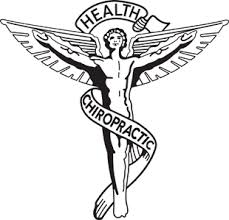 Doctors of Chiropractic – often referred to as chiropractors or chiropractic physicians – practice a drug-free, hands-on approach to health care that includes patient examination, diagnosis and treatment. Chiropractors have broad diagnostic skills and are also trained to recommend therapeutic and rehabilitative exercises, as well as to provide nutritional, dietary and lifestyle counseling (there is much more to the definition. You can read it here http://www.acatoday.org/level2_css.cfm?T1ID=13&T2ID=61
Doctors of Chiropractic – often referred to as chiropractors or chiropractic physicians – practice a drug-free, hands-on approach to health care that includes patient examination, diagnosis and treatment. Chiropractors have broad diagnostic skills and are also trained to recommend therapeutic and rehabilitative exercises, as well as to provide nutritional, dietary and lifestyle counseling (there is much more to the definition. You can read it here http://www.acatoday.org/level2_css.cfm?T1ID=13&T2ID=61
There is no shortage of definitions of the practice so “Cherry Picking” a few can be misleading but from what I can find, traditional medical science is becoming more accepting of the practice in recent years, but still seems to stop short of an endorsement. Here is the definition of Chiropractic according to Medicine Net dot com. http://www.medterms.com/script/main/art.asp?articlekey=2706
Chiropractic: A system of diagnosis and treatment based on the concept that the nervous system coordinates all of the body’s functions, and that disease results from a lack of normal nerve function. Chiropractic employs manipulation and adjustment of body structures, such as the spinal column, so that pressure on nerves coming from the spinal cord due to displacement (subluxation) of a vertebral body may be relieved. Practitioners believe that misalignment and nerve pressure can cause problems not only in the local area, but also at some distance from it. Chiropractic treatment appears to be effective for muscle spasms of the back and neck, tension headaches, and some sorts of leg pain. It may or may not be useful for other ailments.
Not all chiropractors are alike in their practice. The International Chiropractors Association believes that patients should be treated by spinal manipulation alone while the American Chiropractors Association advocate a multidisciplinary approach that combines spinal adjustment with other modalities such as physical therapy, psychological counseling, and dietary measures. For some years the American Medical Association (AMA) opposed chiropractic because of what it termed a “rigid adherence to an irrational, unscientific approach to disease.” However, Congress amended the Medicare Act in 1972 to include benefits for chiropractic services and in 1978 the AMA modified its position on chiropractic.
So, now that we have defined terms the question is, “When should I choose a chiropractor to treat a condition, and which conditions can they successfully treat?” The answer to that question depends entirely on who you talk to. Even Chiropractors differ with one another on exactly what conditions they can and can’t treat.
Preston H. Long is a licensed Arizona Chiropractor who practiced for almost 30 years. Be warned, his assessment of the 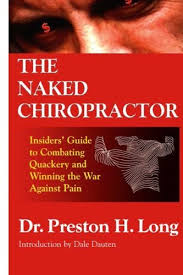 Chiropractic profession is quite negative.
Chiropractic profession is quite negative.
Long has testified at about 200 trials, performed more than 10,000 chiropractic case evaluations, and served as a consultant to several law enforcement agencies. He is also an associate professor at Bryan University, where he teaches in the master’s program in applied health informatics. What follows is just a half dozen bullet points from a blog he wrote titled, “20 Things Most Chiropractors Won’t Tell You.”(I Bob Aronson selected only the first six points and edited them for brevity) you can read the entire unedited version here http://edzardernst.com/2013/10/twenty-things-most-chiropractors-wont-tell-you/
Have you ever consulted a chiropractor? Are you thinking about seeing one? Do you care whether your tax and health-care dollars are spent on worthless treatment? If your answer to any of these questions is yes, there are certain things you should know.
1. Chiropractic theory and practice are not based on the body of knowledge related to health, disease, and health care that has been widely accepted by the scientific community.
Most chiropractors believe that spinal problems, which they call “subluxations,” cause ill health and that fixing them by “adjusting” the spine will promote and restore health. The extent of this belief varies from chiropractor to chiropractor. Some believe that subluxations are the primary cause of ill health; others consider them an underlying cause. Only a small percentage (including me) reject these notions and align their beliefs and practices with those of the science-based medical community. The ramifications and consequences of subluxation theory will be discussed in detail throughout this book.
2. Many chiropractors promise too much.
The most common forms of treatment administered by chiropractors are spinal manipulation and passive physiotherapy measures such as heat, ultrasound, massage, and electrical muscle stimulation. These modalities can be useful in managing certain problems of muscles and bones, but they have little, if any, use against the vast majority of diseases. But chiropractors who believe that “subluxations” cause ill health claim that spinal adjustments promote general health and enable patients to recover from a wide range of diseases. Some have a hand out that improperly relates “subluxations” to a wide range of ailments that spinal adjustments supposedly can help. Some charts of this type have listed more than 100 diseases and conditions, including allergies, appendicitis, anemia, crossed eyes, deafness, gallbladder problems, hernias, and pneumonia.
3. Our education is vastly inferior to that of medical doctors.
I rarely encountered sick patients in my school clinic. Most of my “patients” were friends, students, and an occasional person who presented to the student clinic for inexpensive chiropractic care. Most had nothing really wrong with them. In order to graduate, chiropractic college students are required to treat a minimum number of people. To reach their number, some resort to paying people (including prostitutes) to visit them at the college’s clinic.
4. Our legitimate scope is actually very narrow.
Appropriate chiropractic treatment is relevant only to a narrow range of ailments, nearly all related to musculoskeletal problems. But some chiropractors assert that they can influence the course of nearly everything. Some even offer adjustments to farm animals and family pets.
5. Very little of what chiropractors do has been studied.
Although chiropractic has been around since 1895, little of what we do meets the scientific standard through solid research. Chiropractic apologists try to sound scientific to counter their detractors, but very little research actually supports what chiropractors do.
6. Unless your diagnosis is obvious, it’s best to get diagnosed elsewhere.
During my work as an independent examiner, I have encountered many patients whose chiropractor missed readily apparent diagnoses and rendered inappropriate treatment for long periods of time. Chiropractors lack the depth of training available to medical doctors. For that reason, except for minor injuries, it is usually better to seek medical diagnosis first.
Obviously the previous report is pretty damning but the author’s views are not universally shared. The problem with finding positive reports about the Chiropractic profession is that there are very few traditional double blind placebo studies. Double blind studies are the “Gold Standard” in medicine. Most of the supporting evidence for Chiropractic medicine is of the testimonial variety otherwise known as “Anecdotal” evidence. Often you will see ads that suggest 9 out of 10 who tried something got relief and while that sounds good, it is anecdotal, not double blind and that’s why Chiropractors are suspect in the eyes of the medical profession, even though Medical Doctors will on occasion for specific ailments send their patients to Chiropractors.
Here’s an evaluation of the top ten Chiropractic studies of 2013…it is not positive because, the author says, the studies were not really studies. http://www.sciencebasedmedicine.org/top-10-chiropractic-studies-of-2013/
 The Medical Profession Does Recognize that Chiropractic Manipulation Can Help.
The Medical Profession Does Recognize that Chiropractic Manipulation Can Help.
So, what about the good side of the profession? Where’s the evidence that Chiropractic manipulation of the spine actually has lasting benefits?
I searched for a long time and the best non anecdotal defense I could find for the Chiropractic profession was in Web MD. You can read all of it here, but note that the endorsement is strictly for back pain. http://www.webmd.com/pain-management/guide/chiropractic-pain-relief
Among people seeking back pain relief alternatives, most choose chiropractic treatment. About 22 million Americans visit chiropractors annually. Of these, 7.7 million, or 35%, are seeking relief from back pain from various causes, including accidents, sports injuries, and muscle strains. Other complaints include pain in the neck, arms, and legs, and headaches.
Learn The Truth About Back Pain Causes and Treatments
What Is Chiropractic? ,
Chiropractors use hands-on spinal manipulation and other alternative treatments, the theory being that proper alignment of the body’s musculoskeletal structure, particularly the spine, will enable the body to heal itself without surgery or medication. Manipulation is used to restore mobility to joints restricted by tissue injury caused by a traumatic event, such as falling, or repetitive stress, such as sitting without proper back support.
Chiropractic is primarily used as a pain relief alternative for muscles, joints, bones, and connective tissue, such as cartilage, ligaments, and tendons. It is sometimes used in conjunction with conventional medical treatment.
The initials “DC” identify a chiropractor, whose education typically includes an undergraduate degree plus four years of chiropractic college.
What Does Chiropractic for Back Pain Involve?
A chiropractor first takes a medical history, performs a physical examination, and may use lab tests or diagnostic imaging to determine if treatment is appropriate for your back pain.
The treatment plan may involve one or more manual adjustments in which the doctor manipulates the joints, using a controlled, sudden force to improve range and quality of motion. Many chiropractors also incorporate nutritional counseling and exercise/rehabilitation into the treatment plan. The goals of chiropractic care include the restoration of function and prevention of injury in addition to back pain relief.
What Are the Benefits and Risks of Chiropractic Care?
Spinal manipulation and chiropractic care is generally considered a safe, effective treatment for acute low back pain, the type of sudden injury that results from moving furniture or getting tackled. Acute back pain, which is more common than chronic pain, lasts no more than six weeks and typically gets better on its own.
Research has also shown chiropractic to be helpful in treating neck pain and headaches. In addition, osteoarthritis and fibromyalgia may respond to the moderate pressure used both by chiropractors and practitioners of deep tissue massage.
Studies have not confirmed the effectiveness of prolotherapy or sclerotherapy for pain relief, used by some chiropractors, osteopaths, and medical doctors, to treat chronic back pain, the type of pain that may come on suddenly or gradually and lasts more than three months. The therapy involves injections such as sugar water or anesthetic in hopes of strengthening the ligaments in the back.
People who have osteoporosis, spinal cord compression, or inflammatory arthritis, or who take blood-thinning medications should not undergo spinal manipulation. In addition, patients with a history of cancer should first obtain clearance from their medical doctor before undergoing spinal manipulation.
All treatment is based on an accurate diagnosis of your back pain. The chiropractor should be well informed regarding your medical history, including ongoing medical conditions, current medications, traumatic/surgical history, and lifestyle factors. Although rare, there have been cases in which treatment worsened a herniated or slipped disc, or neck manipulation resulted in stroke or spinal cord injury. To be safe, always inform your primary health care provider whenever you use chiropractic or other pain relief alternatives.
On my OTI Facebook group I asked for individual experiences with chiropractors and got very few, most were positive but general in nature offering few details.
Other Non-Traditional Remedies
There are other non-traditional remedies for back pain that we have not mentioned here. Below you will find several that were listed in “About dot com. “ For the full list of 15 options click on this link. http://altmedicine.about.com/od/chronicpain/a/back_pain.htm
Acupuncture
A 2008 study published in Spine found “strong evidence that acupuncture can be a useful supplement to other forms of  conventional therapy” for low back pain. After analyzing 23 clinical trials with a total of 6,359 patients, the study authors also found “moderate evidence that acupuncture is more effective than no treatment” in relief of back pain. The authors note that more research is needed before acupuncture can be recommended over conventional therapies for back pain.
conventional therapy” for low back pain. After analyzing 23 clinical trials with a total of 6,359 patients, the study authors also found “moderate evidence that acupuncture is more effective than no treatment” in relief of back pain. The authors note that more research is needed before acupuncture can be recommended over conventional therapies for back pain.
Just how does acupuncture work? According totraditional Chinese medicine, pain results from blocked energy along energy pathways of the body, which are unblocked when acupuncture needles are inserted along these invisible pathways. Acupuncture may release natural pain-relieving opioids, send signals to the sympathetic nervous system, and release neurochemicals and hormones.
See Also: Using Acupuncture to Help Relieve Chronic Pain | Sciatica – Causes, Symptoms, and Natural Treatments | What is Trigger Point Therapy?
Massage Therapy
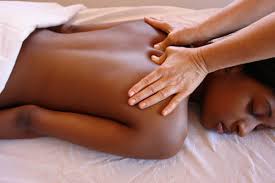 In a 2009 research review published in Spine, researchers reviewed 13 clinical trials on the use of massage in treatment of back pain. The study authors concluded that massage “might be beneficial for patients with subacute and chronic nonspecific low back pain, especially when combined with exercises and education.” Noting that more research is needed to confirm this conclusion, the authors call for further studies that might help determine whether massage is a cost-effective treatment for low back pain.
In a 2009 research review published in Spine, researchers reviewed 13 clinical trials on the use of massage in treatment of back pain. The study authors concluded that massage “might be beneficial for patients with subacute and chronic nonspecific low back pain, especially when combined with exercises and education.” Noting that more research is needed to confirm this conclusion, the authors call for further studies that might help determine whether massage is a cost-effective treatment for low back pain.
Massage therapy may also alleviate anxiety and depression associated with chronic pain. It is the most popular natural therapy for low back pain during pregnancy.
The Alexander Technique
Alexander Technique is a type of therapy that teaches people to improve their posture and eliminate bad habits such as slouching, which can lead to pain, muscle tension, and decreased mobility.
There is strong scientific support for the effectiveness of Alexander Technique lessons in treatment of chronic back pain, according to a research review published in the International Journal of Clinical Practice in 2012. The review included one well-designed, well-conducted clinical trial demonstrating that Alexander Technique lessons led to significant long-term reductions in back pain and incapacity caused by chronic back pain. These results were broadly supported by a smaller, earlier clinical trial testing the use of Alexander Technique lessons in treatment of chronic back pain.
You can learn Alexander technique in private sessions or group classes. A typical session lasts about 45 minutes. During that time, the instructor notes the way you carry yourself and coaches you with verbal instruction and gentle touch.
Hypnotherapy
Also referred to as “hypnosis,” hypnotherapy is a mind-body technique that involves entering a trance-like state of deep relaxation and concentration. When undergoing hypnotherapy, patients are thought to be more open to suggestion. As such, hypnotherapy is often used to effect change in behaviors thought to contribute to health problems (including chronic pain).
Preliminary research suggests that hypnotherapy may be of some use in treatment of low back pain. For instance, a pilot study published in the International Journal of Clinical and Experimental Hypnosis found that a four-session hypnosis program (combined with a psychological education program) significantly reduced pain intensity and led to improvements in mood among patients with chronic low back pain.
Balneotherapy
One of the oldest therapies for pain relief, balneotherapy is a form of hydrotherapy that involves bathing in mineral water or warm water.
For a 2006 report published in Rheumatology, investigators analyzed the available research on the use of balneotherapy in treatment of low back pain. Looking at five clinical trial, the report’s authors found “encouraging evidence” suggesting that balneotherapy may be effective for treating patients with low back pain. Noting that supporting data are scarce, the authors call for larger-scale trials on balneotherapy and low back pain.
Dead Sea salts and other sulfur-containing bath salts can be found in spas, health food stores, and online. However, people with heart conditions should not use balneotherapy unless under the supervision of their primary care provider.
Meditation
An ancient mind-body practice, meditation has been found to increase pain tolerance and promote management of chronic pain in a number of small studies. In addition, a number of preliminary studies have focused specifically on the use of meditation in management of low back pain. A 2008 study published in Pain, for example, found that an eight-week meditation program led to an improvement of pain acceptance and physical function in patients with chronic low back pain. The study included 37 older adults, with members meditating an average of 4.3 days a week for an average of 31.6 minutes a day.
Although it’s not known how meditation might help relieve pain, it’s thought that the practice’s ability to induce physical and mental relaxation may help keep chronic stress from aggravating chronic pain conditions.
One of the most commonly practiced and well-studied forms of meditation is mindfulness meditation.
Tai Chi
Tai chi is an ancient martial art that involves slow, graceful movements and incorporates meditation and deep breathing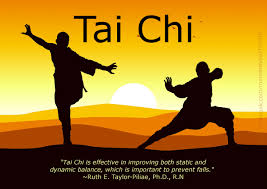 . Thought to reduce stress, tai chi has been found to benefit people with chronic pain in a number of small studies.
. Thought to reduce stress, tai chi has been found to benefit people with chronic pain in a number of small studies.
Although research on the use of tai chi in treatment of back pain is somewhat limited, there’s some evidence that practicing tai chi may help alleviate back pain to some degree. The available science includes a 2011 study published in Arthritis Care & Research, which found that a 10-week tai chi program reduced pain and improved functioning in people with long-term low back pain symptoms. The study involved 160 adults with chronic low back pain, half of whom participated in 40-minute-long tai chi sessions 18 times over the 10-week period.
Music Therapy
Music therapy is a low-cost natural therapy that may reduce some of the stress of chronic pain in conjunction with other treatment. Studies find that it may reduce the disability, anxiety, and depression associated with chronic pain.
A 2005 study published in Annals of Physical and Rehabilitation Medicine evaluated the influence of music therapy in hospitalized patients with chronic back pain. Researchers randomized 65 patients to receive, on alternate months, physical therapy plus four music therapy sessions or physical therapy alone and found that music significantly reduced disability, anxiety, and depression
Conclusion
It is difficult at best to arrive at a conclusion about the effectiveness of Chiropractic manipulation for two reasons. 1) there are very few real scientific studies and 2) The members of the profession don’t even seem to agree on just when and on which conditions Chiropractors can offer lasting relief. I can only conclude with this thought. At one time Chiropractors were ridiculed by the medical profession and not covered by health insurance. Now, that has changed and the profession seems to be enjoying a degree of legitimacy It has never before had.
If you will take anecdotal evidence as scientific proof then Chiropractors are very effective. If you prefer to make a decision based on scientific studies…well, the jury may still be out.
The bottom line is quite simple. If you have been to a Chiropractor and the visit or visits have resulted in relief from what ails you, then keep going. You are the best judge of what’s right for you.
 Bob Aronson of Bob’s Newheart is a 2007 heart transplant recipient, the founder of Facebook’s nearly 4,000 member Organ Transplant Initiative (OTI) and the author of most of these donation/transplantation blogs. You may comment in the space provided or email your thoughts to me at bob@baronson.org. And – please spread the word about the immediate need for more organ donors. There is nothing you can do that is of greater importance. If you convince one person to be an organ and tissue donor you may save or positively affect over 60 lives. Some of those lives may be people you know and love.
Bob Aronson of Bob’s Newheart is a 2007 heart transplant recipient, the founder of Facebook’s nearly 4,000 member Organ Transplant Initiative (OTI) and the author of most of these donation/transplantation blogs. You may comment in the space provided or email your thoughts to me at bob@baronson.org. And – please spread the word about the immediate need for more organ donors. There is nothing you can do that is of greater importance. If you convince one person to be an organ and tissue donor you may save or positively affect over 60 lives. Some of those lives may be people you know and love.
Posted on July 1, 2014, in Bobservations and tagged Alternative treatments, anecdotal evidence, back pain, Chiropractic, Chiropractors, Dr. Preston H. Long, insurance, manipulation, Medicine Net, neck pain, pain, patients, studies. Bookmark the permalink. Leave a comment.
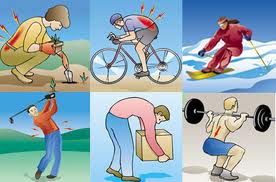
Leave a comment
Comments 0